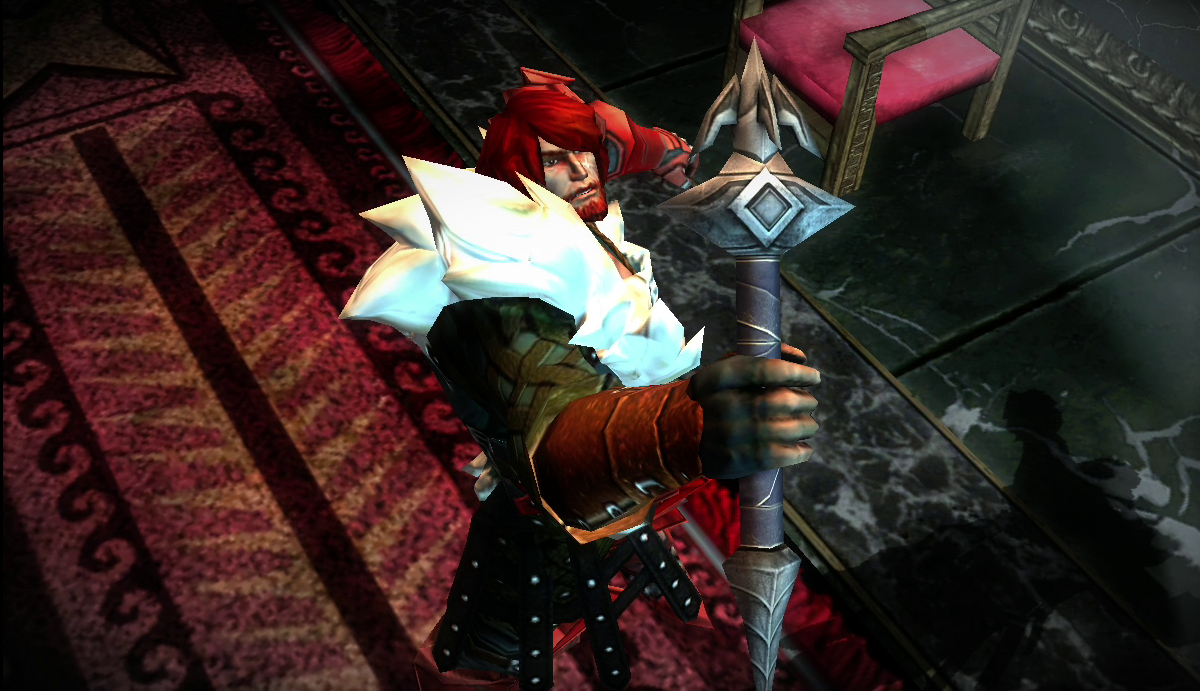Castlevania Lords of Shadow – Mirror of Fate Review
I am your father.
The second chapter in the Castlevania: Lords of Shadow saga, the 3DS'south Mirror of Fate, brought the series closer to its roots than it has been in years. Side-scrolling activeness fabricated a comeback, with a modest amount of Symphony of the Night-style exploration in tow, but it also maintained the philharmonic-driven combat established in the beginning Lords of Shadow game. The combination of the best elements from dissimilar corners of the serial worked well, and the reimagining of the connection between the Belmont family of vampire hunters and Dracula provided an interesting if somewhat anticipated twist. Unfortunately, a small number of pattern choices got in the mode of the good stuff, but in porting Mirror of Fate to consoles, Konami had a risk to finally fix those failings. Mirror of Fate goes further than the expected visual upgrades, making small improvements that lead to a much more enjoyable experience.
The story in Mirror of Fate picks up after the conclusion of the starting time Lords of Shadow and follows the paths of three characters: Simon Belmont, his father Trevor Belmont, and Alucard. Each of their stories is told separately, merely these threads weave together by the end of the game. Unfortunately, due to the heavy hints laid out in the kickoff, the intended chemical element of surprise ultimately falls apartment.
Plot bated, Mirror of Fate is a straightforward thing with few innovative constructs, just what is there feels tight. With your map and its handy objective icon, yous navigate the halls of Dracula's castle, fending off zombies, seething, skull-headed rat-dogs, and undead knights, with an occasional challenging boss fight forth the style. It isn't tricky to maneuver through the castle, but a plethora of platforming sections go on things interesting. The character's whip-similar Combat Cross let's them grapple and swing from chandeliers and broken bits of castle, and so flow into hand-over-paw climbing sections where you accept to leap over chasms before pulling yourself up to solid basis. The orchestration of these sections present a reasonable challenge, but more than importantly, you feel like you're exploring the depths and heights of Dracula's castle, rather than sticking to apparently paths laid by hallways and staircases.
The three-character setup is an interesting method for storytelling, but information technology also allows for a bit of variety in play styles. That's not to say the Belmonts and Alucard are wildly different from 1 some other, but each comes with a slightly different repertoire of movement and attack abilities. Regardless of the character in question, the game's gainsay arrangement makes it easy to cord together a series of directly and area attacks, well-timed blocks that tin stun enemies, and evasive maneuvers. Thank you to the tight, responsive controls, information technology's easy to mash your way to victory, but every encounter provides opportunities to demonstrate mastery over the nuanced timing and circuitous commands.
None of this has changed for the Mirror of Fate HD update, where the near obvious changes are in the visuals. It'south not immediately apparent which textures or models are erstwhile, but what's hither shines on a larger, clearer display. Mercury Steam's beautifully twisted gothic designs for Mirror of Fate finally go the presentation they deserve, and though the in-game models appear crude effectually the edges compared to console-native games, Mirror of Fate HD's presentation is surprisingly strong.

Interestingly, the graphical boost isn't the just departure between versions of Mirror of Fate. Least of all, the controls have been loosened a flake, assuasive you to utilize the D-pad to command your grapheme. Across this, the most important change is the removal of the vast majority of quick-time events. When I reviewed Mirror of Fate the get-go time around, I lamented the fact that the game constantly shoved in quick-time events. Want to open a treasure chest? Get fix to tap the A push button a dozen times. Ready to deal the final blow to a hard boss? Prepare for a serial of push button presses that can't exist missed. In both scenarios, you've proven your abilities and shouldn't exist subjected to laborious inputs for the mere sake of it. In most instances, quick-time events take been removed from Mirror of Fate Hard disk drive in favor of allowing the action or cutscene to progress without farther input.
These are minor changes, but the latter has far-reaching implications on the game at large. I no longer view Mirror of Fate equally a skilful Castlevania game plagued past abrasive design issues. Now, in the example of the HD port, the positives rise to the surface rather than the negatives, and Mirror of Fate finally feels similar a great add-on to the series. It has the virtually intriguing story in any Castlevania game to date, even if it is a chip predictable, and the emphasis on combat higher up exploration is a off-white trade, primarily because the combo system is then fluid and sports a expert amount of depth. Mirror of Fate on the 3DS may non have been the side-scrolling, vampire-hunting adventure that we all hoped information technology would be, but with its heightened presentation and revamped mechanics, Mirror of Fate HD is a big footstep in the right direction.
Back To Top
wattssishomistend.blogspot.com
Source: https://www.gamespot.com/reviews/castlevania-lords-of-shadow-mirror-of-fate-hd-revi/1900-6415521/
0 Response to "Castlevania Lords of Shadow – Mirror of Fate Review"
Post a Comment